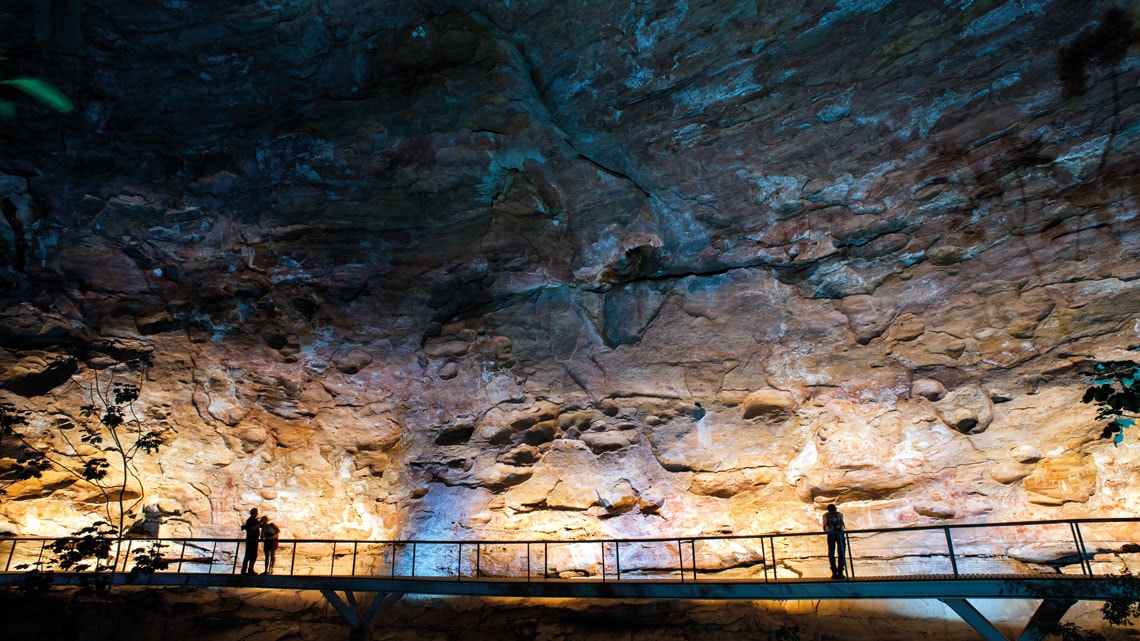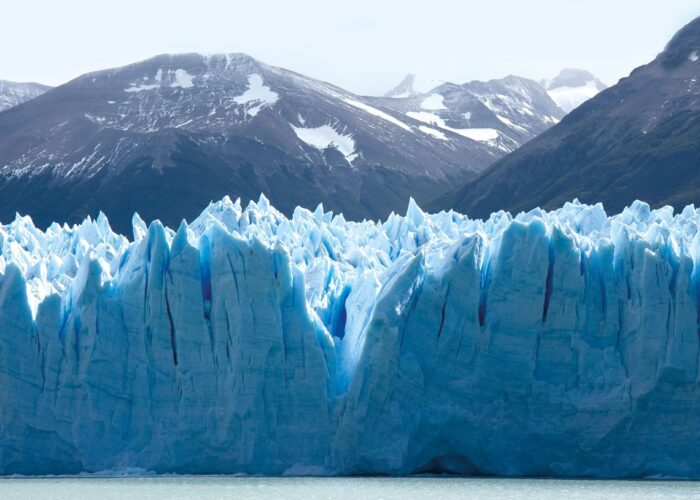The concept of science tourism—voyages and expeditions carried out with scientific objectives—dates back to the end of the nineteenth century, when expeditions and field studies began to integrate research strategies. Aimed at amateurs, today it includes initiatives to increase understanding about a given region’s historical and geological heritage, activities built around astronomical and natural observation, and lab immersion programs.
“The expeditions of Charles Darwin [1809–1882] are pioneering examples of what we now call science tourism. He embarked from Plymouth, England, aboard the Beagle in February 1831 for a four-year, nine-month voyage, to map the coast of South America,” notes tourism academic Bruna Ranção Conti, a professor of tourism at the Federal University of the State of Rio de Janeiro (UNIRIO). The voyages were the basis for the concepts Darwin presented in The Origin of Species, published in 1859. Conti believes the academic discussion in Brazil regarding science tourism began in the 1980s, and since then the term has been used to characterize work exploring certain historic, natural, and urban landscapes. “Science tourism is always associated with other disciplines, such as ecology and culture, and can also be part of educational tourism and exchange programs,” she explains.
When related to culture, science tourism presents itself as an opportunity for the visitor to experience the customs and values of the place visited. As related to ecotourism, it involves the production of scientific knowledge in activities such as cave exploration, bird watching, and environmental studies in conservation areas, among others. “In Brazil, one of the main fields of development in this discipline includes geological parks,” the researcher adds.
Conti is coordinator of the “Science Tourism – Darwin’s Path in Rio de Janeiro,” extension project, developed by UNIRIO and other institutions, including the Casa da Ciência and the Transport Engineering Graduate Program at the Federal University of Rio de Janeiro (UFRJ), and the Architecture and Urbanism Postgraduate Program at Fluminense Federal University (UFF). The initiative is mapping Darwin’s expeditions to the city of Rio de Janeiro between April and July 1832, with the aim of turning them into historical sites, and to hold pedagogical workshops in the region’s public schools about the British naturalist’s scientific importance.
Michel Bregolin, a professor in the Tourism and Hospitality Graduate Program at the University of Caxias do Sul (UCS), cites a 2011 article authored by Bourlon and Mao that identifies four main types of science tourism: adventure explorations; visits to natural places or historical and cultural heritage sites; science volunteering, where visitors participate as research assistants; and trips made for field activities or participation in congresses. UCS is part of the International Research and Development Network on Scientific Tourism. Created in 2018, it currently brings together the Center for Research on Ecosystems of Patagonia (CIEP), the Austral University of Chile, Grenoble Alpes University in France, and the University of Québec at Trois-Rivières in Canada.
Bregolin notes that the initiative to create the network resulted from a desire to replicate the experience of a program developed by the Chilean institutions, which had designed tourist itineraries based around research being conducted in the Aysén region of northern Patagonia. Activities include recording marine animals in the region’s archipelagos, guided expeditions to volcanoes, and learning artisanal fishing techniques. “The network’s creation envisages including Spanish and Portuguese institutions and developing similar initiatives in other countries, in addition to establishing a common definition for the concept of science tourism,” says the UCS professor. Although there is still no consensus on the term, he states that two guidelines are considered fundamental to defining the practice. The first is that the activity must include the participation of scientific institutions, either in producing the content to be shared with visitors, or in organizing the itineraries. Secondly, it should additionally foster the development of local communities.
Bregolin cites a project aligned with these criteria that was developed in the coastal lagoons of Rio Grande do Sul between 2007 and 2016 with support from the Petrobras environmental program. The initiative identified the impacts caused by the type of tourism commonly practiced in the region (comprising 640 kilometers of coastline), which causes damage to fauna and flora, soil, and water resources. The project’s coordinator, biologist Rosane Maria Lanzer, from UCS, notes that the study’s results were compiled in three editions of a socioenvironmental atlas, and in didactic material distributed to schools and the media. “Now we’re evaluating how to take advantage of this content to create science tourism activities in the lagoons, which would allow us to reconcile enjoying the natural resources with environmental awareness activities,” she says. Lanzer notes that for now tourism is more developed in the northern region of the lagoons, many of which are polluted. “By establishing sustainable tourism practices, we intend to provide a different course for visits to the southern region, while spreading knowledge about biodiversity and the environment,” she adds. The researcher explains that normal tourism looks for leisure or adventure options, without worrying about the impacts or destruction that the presence of visitors can cause to these environments. “By contrast, science tourism involves people who also want to learn about these places, and it’s based on developing activities that ensure their preservation,” Lanzer explains. In an article published in August 2019, researchers at the University of Turku, in Finland, advocate for greater participation by scientists in the tourism sector. Not only as a way of reinforcing their role in raising societal awareness of the climate crisis and the loss of biodiversity, but also as an opportunity to increase avenues for fundraising.
With itineraries that include visits to historic ruins, observing the migration process of butterflies, or expeditions to geological parks, science tourism offers options to travelers both in Brazil and abroad. The following pages highlight some of these possibilities.
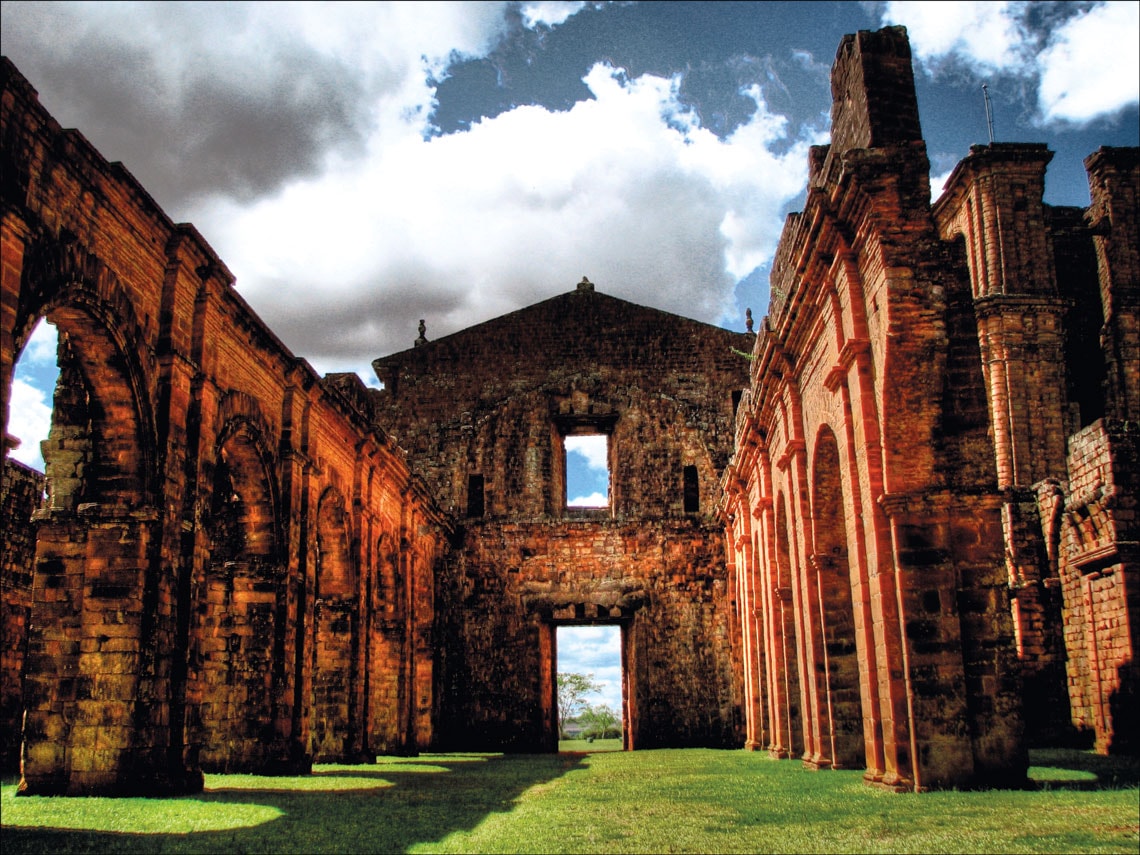
Publicity
The Guarani Jesuit MissionsPublicityArchitectural, cultural, and artistic heritage
These feature visits to buildings of historical and cultural interest. The Guarani Jesuit Missions, which have been named cultural, natural, and world heritage sites by the United Nations Educational, Scientific, and Cultural Organization (UNESCO), are five buildings from the missionary era built by the Society of Jesus in the Spanish Crown colonies during the 17th and 18th centuries. They are located in São Miguel das Missões, in Rio Grande do Sul, and in the city of San Ignácio Miní, in Argentina. Museologist Margarita Nilda Barretto Angeli, a professor at the Federal University of Santa Catarina (UFSC) and the University of Buenos Aires (UBA), explains that visiting the sites allows people to learn something of the history of both countries, in addition to helping preserve the sites’ material assets. “Promoting tourism to these ruins attracts resources to the cities,” she adds.
Science in the urban environment
Richland, Kennewick, and Pasco are three cities located in the southeastern region of Washington State, in the United States. Known as the Tri-Cities, they share a common commercial center and have several attractions related to the world of science. A few of the highlights include the Bechtel National Planetarium, a paleontological excavation from the Ice Age (that took place about ), and the Laser Interferometer Gravitational-Wave Observatory (LIGO). All offer guided visits for children and adults.
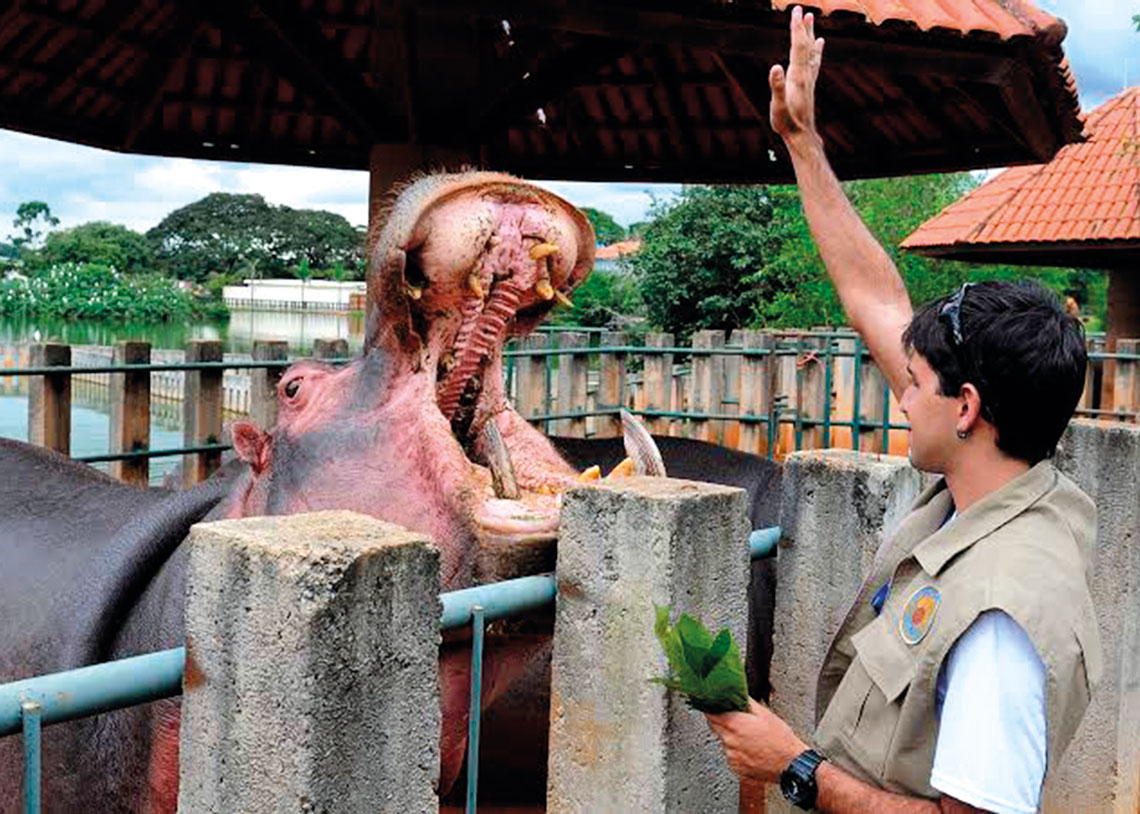
Publicity
The ZooPublicityIn Brasília, Ciência em Ação [Science in Action] is an app that suggests tourist routes between institutions that make up the Federal District Network for Education and Scientific Dissemination in the Brazilian capital. These include the Zoo, the Botanical Garden, the Museum of Image and Sound, the Federal District Public Archive, and certain locations at the University of Brasília (UnB), such as the Veterinary Anatomy Lab and the Seismological Observatory.
Geological parks
Visits to regional attractions such as geoparks are one of the most widespread forms of science tourism in the world. These are locations that feature sites and landscapes with international geological importance, managed in ways that protect historical patrimony, inform the public, and help ensure sustainable development in their region. UNESCO recognizes 127 geoparks in 35 countries. “The organization created the concept of geoparks in 2004 to preserve regions that could demonstrate the evolution of continents and show the land’s geological heritage,” says geologist Luiz Carlos Borges Ribeiro, a researcher from the Peirópolis Cultural and Scientific Complex, at the Federal University of Triângulo Mineiro (UFTM).

Publicity
China’s Alxa desertPublicityChina is the nation with the largest number of geological parks recognized by UNESCO, with a total of 39; followed by Spain, with 13. One of them, located in China’s Alxa desert, includes three regions with different geological characteristics: the Badan Jaran desert (with dunes that reach heights of 500 meters), the Tengger desert, and the Juyan Lake region.
The Uberaba – Terra de Gigantes Geopark located in Uberaba, Minas Gerais, is seeking UNESCO recognition. The site offers tourists routes for observing fossilized bones from the Late Cretaceous period (99.6 million to 65.5 million years ago), especially dinosaurs from the titanosaur group. Some of the discoveries were made by Rio Grande do Sul paleontologist Llewellyn Ivor Price (1905–1980), who worked in the region between 1947 and 1974.

Publicity
The Uberaba – Terra de Gigantes Geopark PublicityThe Araripe Geological Park, in Ceará, is the only geopark in Brazil currently recognized by UNESCO. Located in what is considered the largest sedimentary basin in the interior of Northeastern Brazil, it features geological and fossil records from the Early Cretaceous period (between 145.5 million and 99.6 million years ago). The park provides opportunities for visitors to learn about petrified tree trunks and impressions left by ferns, conifers, flowering plants, mollusks, arthropods, fish, amphibians, and reptiles from the period. Its sedimentary deposits preserve a wide variety of rocks that enable glimpses of the region’s evolving geological environments.

Publicity
The Araripe Geological ParkPublicityCreated with the purpose of ensuring the preservation of the cultural and natural heritage of Serra da Capivara National Park, in Piauí, the American Man Museum Foundation (FUMDHAM) develops cultural, social, and interdisciplinary science activities. Located in the city of São Raimundo Nonato, in Piauí, it manages the park’s archaeological heritage, which comprises around 700 sites with prehistoric rock paintings up to 12,000 years old, recorded on rock walls. In addition to developing research, the foundation organizes exhibitions with the archaeological, paleontological, zoological, and botanical material collected in scientific studies, and promotes lectures, meetings, and seminars. Serra da Capivara National Park has been a UNESCO World Heritage Site since 1991.
Stars and other celestial bodies
Astrotourism started about 20 years ago in Chile, a country that hosts 40% of the world’s largest optical and infrared telescopes. Many of them are located in the Atacama Desert, which offers cloud-free skies 90% of the time. Canada, the United States, and Spain also have astronomical observatories there that encourage stargazing activities for tourists.

Publicity
The observatory of Calar AltoPublicityIn Spain, the practice was almost nonexistent until 2010, when companies formed that were dedicated to developing astronomical and rural tourism to the Canary Islands, and the country’s southern cities. One of the region’s main attractions is the observatory of Calar Alto, which is close to the city of Almería. The observatory hosts activities where astrophysics researchers present the concepts of celestial mechanics, and participants can learn to use professional telescopes. Javier Sánchez says that through the company he has directed since 2016, more than 25,000 people have visited the observatory. “We also organize night sky observation activities at the Alhambra, an architectural complex built in Granada during the Moorish occupation of Andalusia, from 1248 to 1354.” In addition to basic notions about celestial mechanics, aspects of the history of Islamic astronomy are also discussed.
The Griffith Observatory, located in a municipal park in Los Angeles, United States, promotes artistic and photographic exhibitions about space, and allows visitors to view the sky through its telescopes. Periodically, researchers from the institution organize activities for visitors that include hikes to observe the stars.
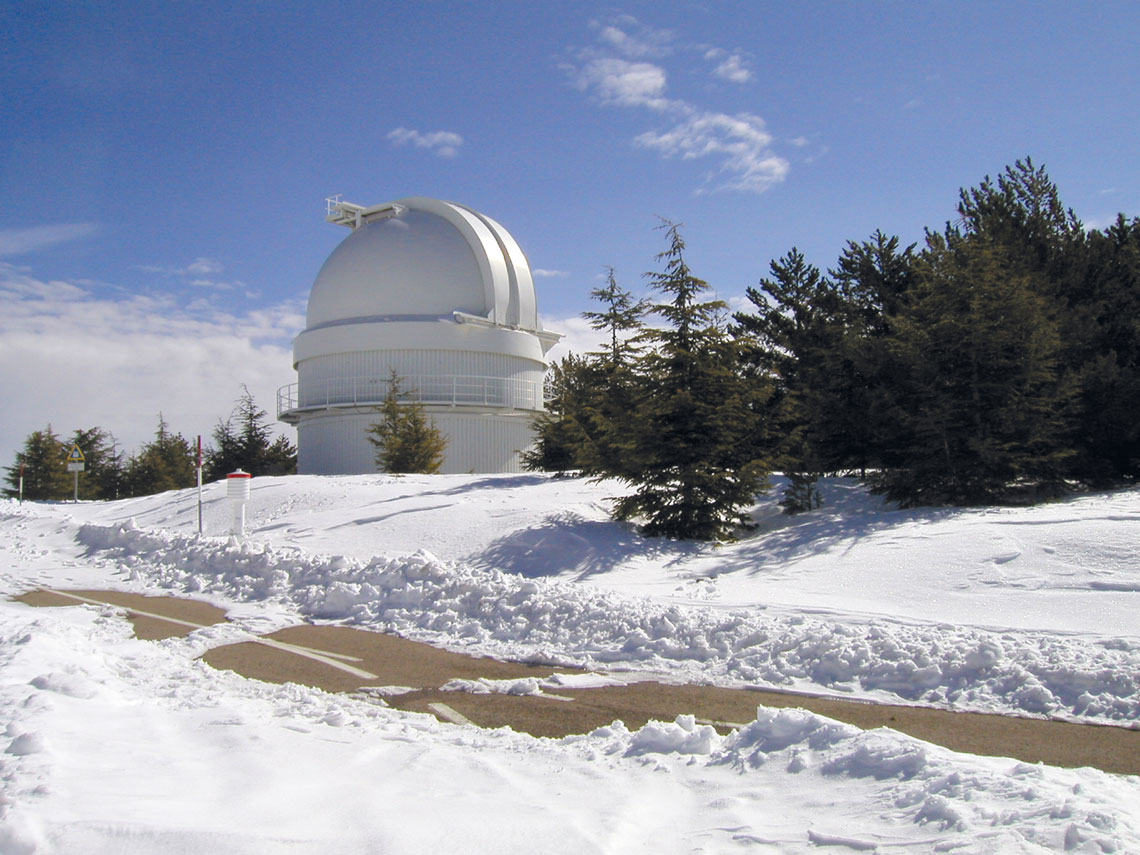
Jesus Cabrera
The Griffith ObservatoryJesus CabreraNature and the environment
The Patagonian Archipelagos project was created based on an agreement signed between the Center for Research on Ecosystems of Patagonia (CIEP) and the Multilateral Investment Fund (FOMIN) of the Inter-American Development Bank (BID). Its purpose is to foster the socioeconomic growth of local communities in Chile’s Aysén region, and to contribute to ecosystem conservation through tourist activities. As part of an initiative led by geographer Fabien Bourlon, CIEP mapped the scientific studies conducted there between 1950 and 2014, and began encouraging tour operators to include such content in their offerings. It also prepared a guide to the various tour operators organized by their specialties, which include observation of marine fauna and glaciers, forest expeditions, and hake fishing.
Earthwatch Institute is an NGO that organizes science tourism activities in countries in Africa, Asia, South America, Europe, and North America. One of these is a river expedition through the Peruvian Amazon, where it is possible to observe aquatic and forest animals, birds, and fauna species. In one of the programs, travelers are invited to act as Earthwatch researchers, collaborating with studies on the region’s wildlife. The research helps in the development of conservation strategies, in partnership with the local community.
Founded in 1996 and based in Chamonix, France, the Research Center for Alpine Ecosystems is an independent organization specializing in developing scientific research on the environment of alpine ecosystems. It uses a hybrid model for activities that combines the academic lab with organized fieldwork. It offers educational programs for university students from all over the world.
